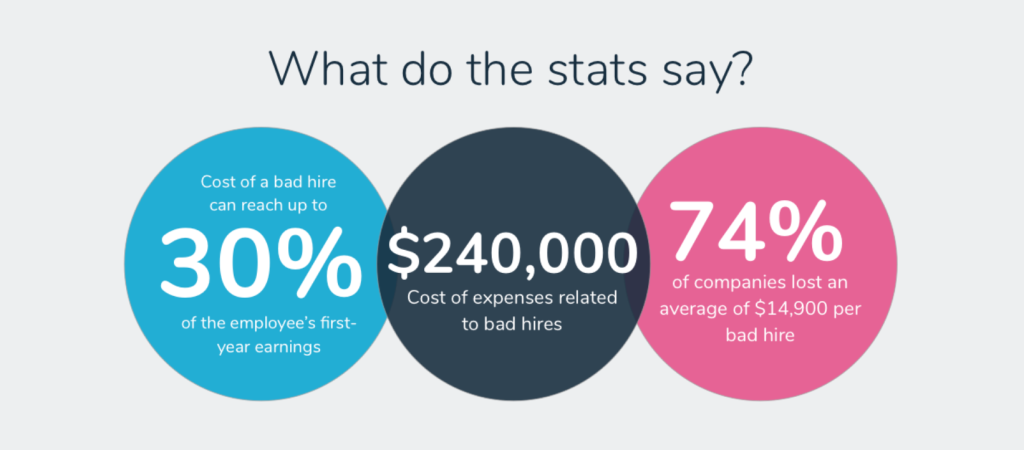Successful organizations have one thing in common: Relying on some form of data to make informed decisions. A few years ago, data collection used to be a taxing affair that involved manual data collection using face-to-face interviews with customers or phone and email surveys, and then collated in Excel spreadsheets. However, given the time-intensive and high financial costs associated with these data collection and collation methods, many companies used to operate with limited data. Fast-forward to today, and companies can hire dedicated developers to build big data tools capable of whittling vast volumes of data into smaller, more meaningful, and helpful statistics.
In this article, we are going to look at what big data is, the role of big data in hiring, and how it will change the HR field in the future.
But first…
What is big data?
As the name suggests, big data is used to refer to a combination of huge volumes of structured, semi-structured, and unstructured data that is collected by organizations for creating predictive models, machine learning projects, and other advanced analytics applications.
Big data is mainly characterized by three major pillars, commonly referred to as 3Vs:
- Volume: Today, companies are collecting data from various sources, including social media platforms, business transactions, industrial equipment, videos, smart (IoT) devices, and more.
- Velocity: With the explosive growth of IoT, companies have had to deal with substantial data streams coming at an unprecedented speed. However, with smart meters, sensors, and RFID tags, companies can generate, collect, and process this data in real-time.
- Variety: In a business setting, data comes in multiple formats, including structured, semi-structured, and unstructured formats.
Application of big data to HR
The current job market has become more candidate-driven, making it super-hard for recruitment managers to fill vacant positions with qualified talent. Worse still, the supply and demand imbalance in the labor market makes it more costly in terms of time and resources to recruit the right candidate. According to a study conducted by the National Association of Colleges and Employers, it costs a company an average of $7,645 to recruit a new employee. A different survey by Glassdoor puts the average recruitment cost at $4,000, with companies taking up to 52 days to fill a vacant position.
These significant changes in the labor market leave hiring managers with no other choice but to re-engineer their traditional talent acquisition strategies. And one of these new strategies is to incorporate big data into the recruitment and hiring process in the following areas;
Recruitment
Recruiting top talent should be the primary task of your HR department. This means selecting the applicants’ resumes, interviewing, and thoroughly screening to choose the best candidates to fill the vacant position. With big data, your HR department can access a broader platform for recruitment.
A good example of a company using big data is IBM. In 2012 the tech giant acquired Kenexa, a recruiting and talent management company. With this acquisition, IBM was now able to leverage the enormous volumes of data collected about employees and how they perform.
Lastly, with big data, potential candidates are also able to lift the company’s veil and learn more about the company as well as make the entire recruitment process open and transparent.
Training and development
Workforce training is a fundamental aspect of ensuring sustainable development. With a successful training program in place, your organization can increase employees’ knowledge level and improve their productivity.
With that said, traditional employee training calls for substantial financial resources, time, labor, and material. However, big data allows for easy information access and sharing, making it more convenient to train your employees.
Additionally, sophisticated HR software can help leaders pinpoint employee weaknesses and customize the training to meet their needs as well as choose the appropriate form of training. For example, Danone, a global food processing company, successfully rolled out the Danone Campus 2.0 platform in 2014. Using the platform, the company is able to highlight external and internal knowledge of the employees, improve collaboration, and share best practices.
Performance and compensation
Everyone is always looking for the best opportunity to improve their financial position. For instance, if you are looking to hire a developer who is worth a specific salary amount, they will as to be paid depending on the value they bring to your company. As a smart employer, it is essential to know that the key to keeping quality employees lies in giving them the appropriate compensation and benefits package.
And unlike the traditional performance management systems that were often disjointed from the performance results, big data in performance management allows your HR managers to record the daily workloads, job scope of specific tasks, and their individual achievements.
Apart from the usual suspects like Amazon and Walmart, there are other examples of companies using big data to improve the performance of employees. For instance, Starbucks’ mobile app and vast in-house data stores help improve performance by showing the barista their preferred orders even before the customers get to the counter. As a result, service time and order delivery are considerably enhanced.
The possibilities of big data in recruiting
Using a data-driven approach when hiring means that all the previously held presumptions are replaced with data and validation. By tapping into the power of big data, your HR department it can be possible to:
Eliminate gut-feeling hiring
In a business setting, any decision that is based on a gut feeling instead of data has a high chance of backfiring. While the candidates could be the most charming individual to have ever met, it doesn’t mean that they automatically qualify to join your team.
So, if you are to hire a dedicated developers team, for instance, you need to make your hiring decision based on the recruitment software and tools that will help you “datafy” the process, as opposed to using their resume and likeability. This way, you can conclusively determine their skills, personality fit, and many other variables.
In short, data-driven decision-making eliminates the trial-and-errors within your recruitment and selection process, instilling more confidence in your decisions.
Improve the quality of hire
Hiring the wrong person to fill a vacant position in your company can lead to disastrous consequences. According to a 2019 report by Breezy HR, 74% of companies in the U.S. admitted having fallen victims of bad hires, with a single bad hire costing more than $14K.

By introducing big data into the recruitment process, your company can gain an analytical edge and strategic upper hand when it comes to finding the right candidates, hence avoiding costly hiring mistakes.
For instance, if you are looking for a web development company to help out in your development project, big data gives you online access to a large pool of portfolios and open-source projects, allowing you to compile and profile potential companies to narrow down the talent pool.
Predict the speed of hire
As a recruitment manager, wouldn’t it be great if you had a means of eliminating uncertainties in the hiring time turnaround? When properly implemented, big data analytics gives a more accurate estimate of the time it is likely to take when recruiting for a particular role, including the time to be spent on the respective stages of the hiring process.
Armed with this information, stakeholders can work with more credible timelines as well as discover the potential bottlenecks that could be slowing down your hiring process.
Predict performance
We are living in a data-driven world where almost everything is quantifiable. Gone are the days of measuring performance using simple parameters like profits. Along with the profits, you also need to establish whether the prospective new hire fits within your work culture and that they can satisfactorily perform their duties.
Unfortunately, using your gut-feeling in this context could be unreliable. Worse still, attempting to tick all their qualifications against those of your current top performers and job requirements top performers could be time-consuming.
Instead, you can create a high performer’s human resource analytics model using the records of successful employees. At the end of it all, you will have built a laser-focused head-hunting tool targeting the right talent by sending them personalized messages.
Embed diversity into your recruiting process
According to a 2017 study by Deloitte, 69% of business executives indicated that inclusion and diversity in the workplace are essential. The same report established that workplace diversity has a direct impact on the business performance and corporate purpose.
However, telling whether you have hit your intended diversity targets using traditional recruiting methods is hard. To eliminate the guesswork, your recruitment team can use big data analytics to continually surveil your hiring funnel to track significant demographic quotients such as gender, age, veteran status, and ethnicity. Blendoor, a recruiting & people analytics firm, has seen a 26% jump in employee diversity by using big data to create unique ‘performance profiles’ without irrelevant hiring data.
Legal and ethical issues
One of the biggest concerns facing big data is privacy. Many people fear that their information and data could be used against them, practices which have been branded as discriminatory. However, using big data in HR is seen as an effective risk management technique.
The future of big data in HR management
Globally, HR management is headed for a paradigm shift with the inclusion of big data. According to a recent report by Statista, the global data center IP traffic is forecasted to reach around 19.5 zettabytes (ZBs) by the year 2021. A different report indicates that connected IoT devices will generate a total data volume of 79.4 ZBs by 2025.
In terms of revenue, the combined revenue from big data in 2019 was $189.1 billion. This amount is projected to jump to $274.3 billion by the year 2022. As for the advanced analytics software that helps extract value and generate business insights from big data, the market is expected to hit the $14.5 billion mark by 2022. During the same period, banks will continue being the largest consumers of big data and business analytics technology.
Final Thoughts
Since its inception, big data has seen monumental growth and dominated almost every facet of the business world. Organizations are seeking to unlock the real value of big data such as the drastic reduction in data storage, lowering production cost, and offering eye-opening insights when recruiting.
However, in the prevailing hiring dynamics, merely filling a vacant position fast isn’t enough. You need to get the right candidate who fits for the position skill-wise, fits your company’s culture, and is highly engaged. When efficiently implemented, big data can help your HR department better manage the existing talent under their purview as well as choose the compatible candidate with the right skills.
